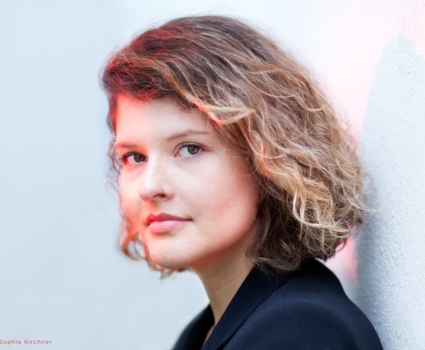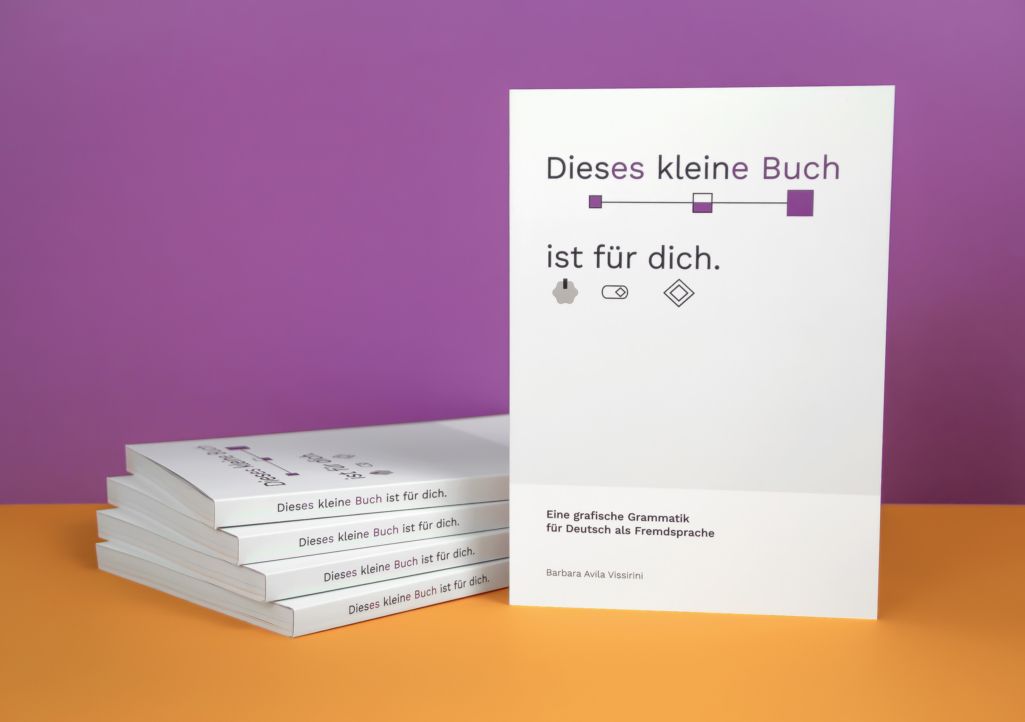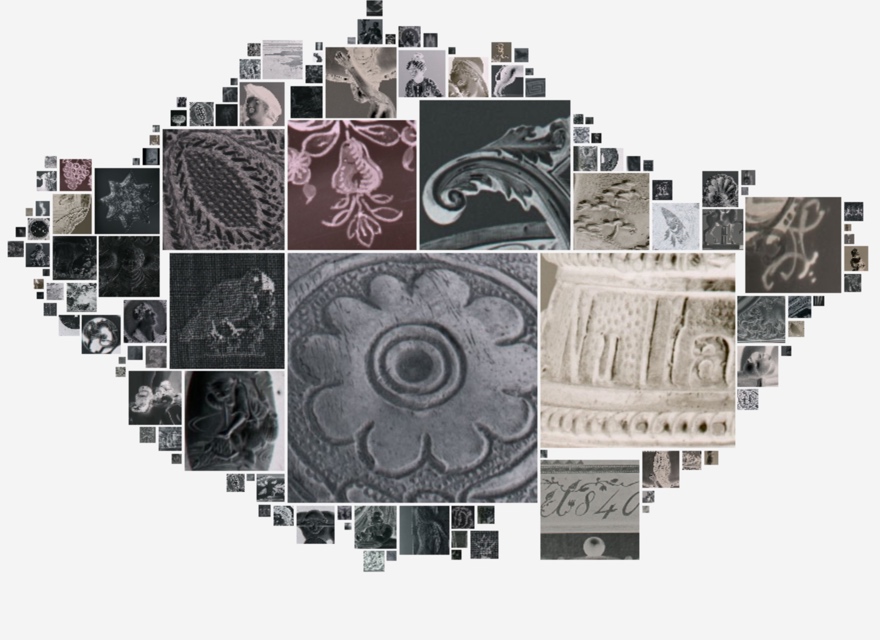Barbara Avila Vissirini Communication Design
Barbara Avila Vissirini is a Berlin based communication designer associated with the Urban Complexity Lab. She is mainly interested in the relationship between design and information visualization in the fields of cultural collections and foreign language learning.

She holds a Masters degree in Design from the Fachhochschule Potsdam and a Bachelor degree in Graphic Design from the University Anhembi Morumbi. During her studies she explored the applications of information visualization and semiotics in communication design. In her Master thesis she investigated visual inconsistencies in language learning materials, developed design guidelines to support a consistent representation of grammar structures and applied them to create a visual system for German declension. Currently. she is working on expanding this system to cover further grammar aspects of the German language.
Projects Contributions
Visuals for Language
Consistent visual representations of grammar
Close-Up Cloud
Gaining a sense of overview from many details
Publications Published Works
Dieses kleine Buch ist für dich
Wenn wir eine neue Sprache lernen, stoßen wir auf viele neue grammatikalische Begriffe: Artikel, Modalverb, Nominativ, Partizip, und so weiter. Dieses kleine Buch verwendet daher ein visuelles System, um dir die deutsche Grammatik und ihre Begriffe vorzustellen. Zeichen, Schrift und Farben machen grammatikalische Merkmale sichtbar und unterstützen dich dabei, die Struktur im Fokus zu verstehen und zu merken. Diese visuelle Unterstützung wird im gesamten Buch einheitlich verwendet. Damit wird es für dich einfacher, den gelernten Inhalt wiederzuerkennen.
The Close-up Cloud: Visualizing Details of Image Collections in Dynamic Overviews
This paper introduces a visualization technique designed to uncover iconographic patterns prevalent within a collection while at the same time allowing close viewing of these particular details. Challenging an institutionalized understanding of overview and detail as inherently opposed, the intention of this research is to develop a visualization method that accounts for the iconographic abundance of a collection and encourages its casual exploration. Expanding digitization efforts have led to a growing number of rich cultural heritage datasets that are successively being published online. At the same time scholars are exploring the potential of computational methods to expand the scale and scope of art history. In this context, data visualization is often equated with a distanced perspective diminishing the intricate and intriguing details of individual artifacts. In collaboration with a museum of applied and decorative arts, we have devised a novel interface concept for the exploration of image collections such as historical glass plate negatives. Inspired by photographic plates on a light table, the resulting Close-up Cloud translates the art historical method of close viewing into the digital by combining it with a dynamic representation of quantitative iconographic patterns across an entire image collection.
A Visual System for Grammar Instruction in Foreign Language Learning
Complementary to verbal explanations, visual techniques are often implemented in grammar instruction to help learners process information. Highlighting using typograhic features can help distinguish the structure in focus from its context, aiding information seeking and drawing attention to important features. Additionally, visual encoding can associate graphical traits to grammar categories to support the identification and recognition of related structures and language patterns.
An analysis of current grammar books for German as a foreign language has shown, however, that a combination of multiple encoding techniques representing coexistent grammar categories can be challenging to make sense of. The absence of a global design strategy within a book generates inconsistent and sometimes conflicting grammar representations, which can lead to misunderstandings and create a hindered and fragmented learning experience.
In order to avoid such conflicts, this research presents design guidelines to combine both techniques efficiently and introduces a visual system developed for German as a foreign language. In addition to indicating a word’s class, similar to Montessori Grammar Symbols, this system uses text appearance and symbols to indicate further grammar features relevant for non-native speakers, such as grammatical gender, case declension, verb tense, etc. By maintaining a consistent visual character, such support fosters structure recognition and comparison as well as pattern identification throughout all grammar representations. Initially developed for the German language, this systematic approach of associating grammar categories with visual features could be adapted to create new systems for other languages.
Close-Up Cloud: Gaining A Sense Of Overview From Many Details
After two decades of steady increases in image resolution through technical advances in image sensors, we are now also witnessing a significant growth in comprehensively tagged image collections. Concurrently cultural institutions have been digitizing their collections, while cultural scholars have been investing considerable efforts into the annotation of images to denote iconographic details and historical context. Despite these developments, existing interfaces to access image collections do not harness the possibilities provided by rich visual details of high-resolution images and detailed tags associated with them.
A particularly promising development, however, is the growing research interest in visualization to support the analysis and exploration of cultural heritage data [Windhager et al., 2018]. In this context, art historians are experimenting with digital methods, in particular visualization [Bailey and Pregill, 2014], to explore their potential for expanding the scale and scope of art history [Drucker, 2013; Manovich, 2015]. In these experiments, digital methods tend to be equated with a distanced perspective on the phenomenon [Moretti, 2013] with the result that many visualizations provide high-level overviews that diminish the intricate and intriguing details of individual artifacts [Hochman and Manovich, 2013; Hristova, 2016].
With this research we present an approach towards visualization that is challenging the understanding of overview and detail as something inherently opposed. We introduce a technique that clusters iconographic details of images in order to reveal visual patterns prevalent in a collection.


